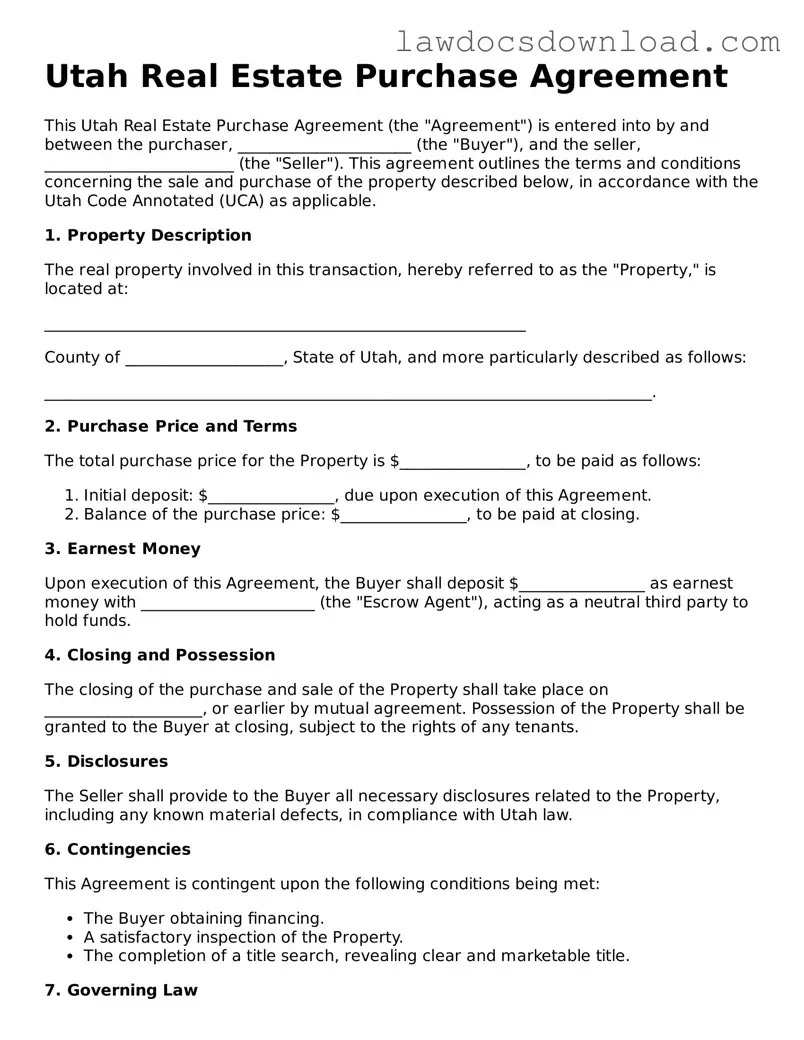Utah Real Estate Purchase Agreement
This Utah Real Estate Purchase Agreement (the "Agreement") is entered into by and between the purchaser, ______________________ (the "Buyer"), and the seller, ________________________ (the "Seller"). This agreement outlines the terms and conditions concerning the sale and purchase of the property described below, in accordance with the Utah Code Annotated (UCA) as applicable.
1. Property Description
The real property involved in this transaction, hereby referred to as the "Property," is located at:
_____________________________________________________________
County of ____________________, State of Utah, and more particularly described as follows:
_____________________________________________________________________________.
2. Purchase Price and Terms
The total purchase price for the Property is $________________, to be paid as follows:
- Initial deposit: $________________, due upon execution of this Agreement.
- Balance of the purchase price: $________________, to be paid at closing.
3. Earnest Money
Upon execution of this Agreement, the Buyer shall deposit $________________ as earnest money with ______________________ (the "Escrow Agent"), acting as a neutral third party to hold funds.
4. Closing and Possession
The closing of the purchase and sale of the Property shall take place on ____________________, or earlier by mutual agreement. Possession of the Property shall be granted to the Buyer at closing, subject to the rights of any tenants.
5. Disclosures
The Seller shall provide to the Buyer all necessary disclosures related to the Property, including any known material defects, in compliance with Utah law.
6. Contingencies
This Agreement is contingent upon the following conditions being met:
- The Buyer obtaining financing.
- A satisfactory inspection of the Property.
- The completion of a title search, revealing clear and marketable title.
7. Governing Law
This Agreement shall be governed by and construed in accordance with the laws of the State of Utah.
8. Signatures
This Agreement shall be signed by both the Buyer and the Seller, indicating their agreement to the terms and conditions set forth.
Buyer's Signature: _______________________________ Date: ___________________
Seller's Signature: ______________________________ Date: ___________________
